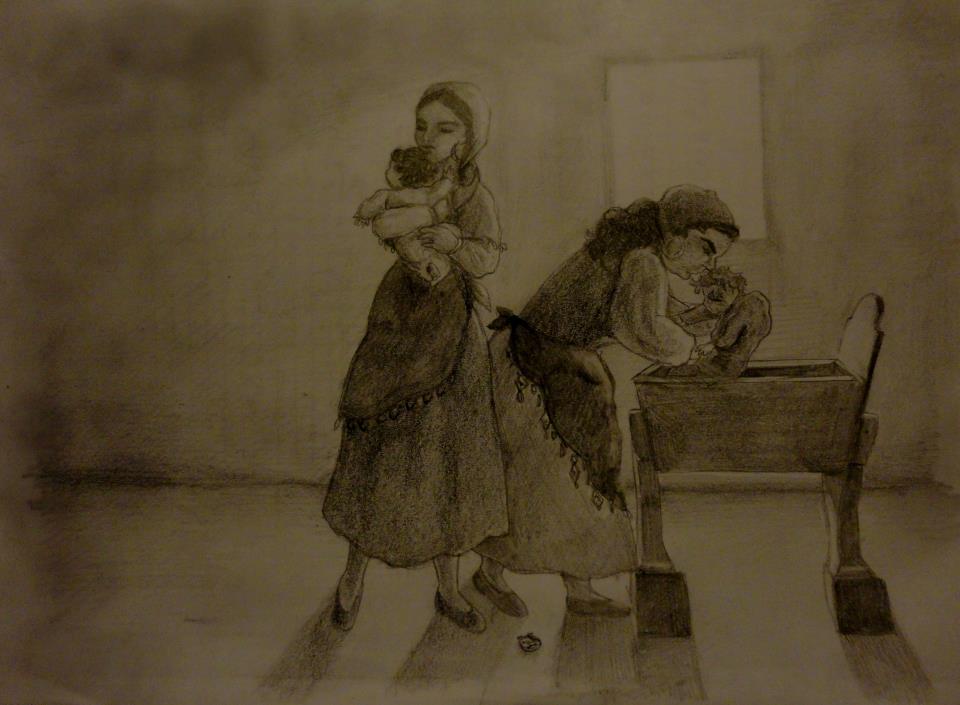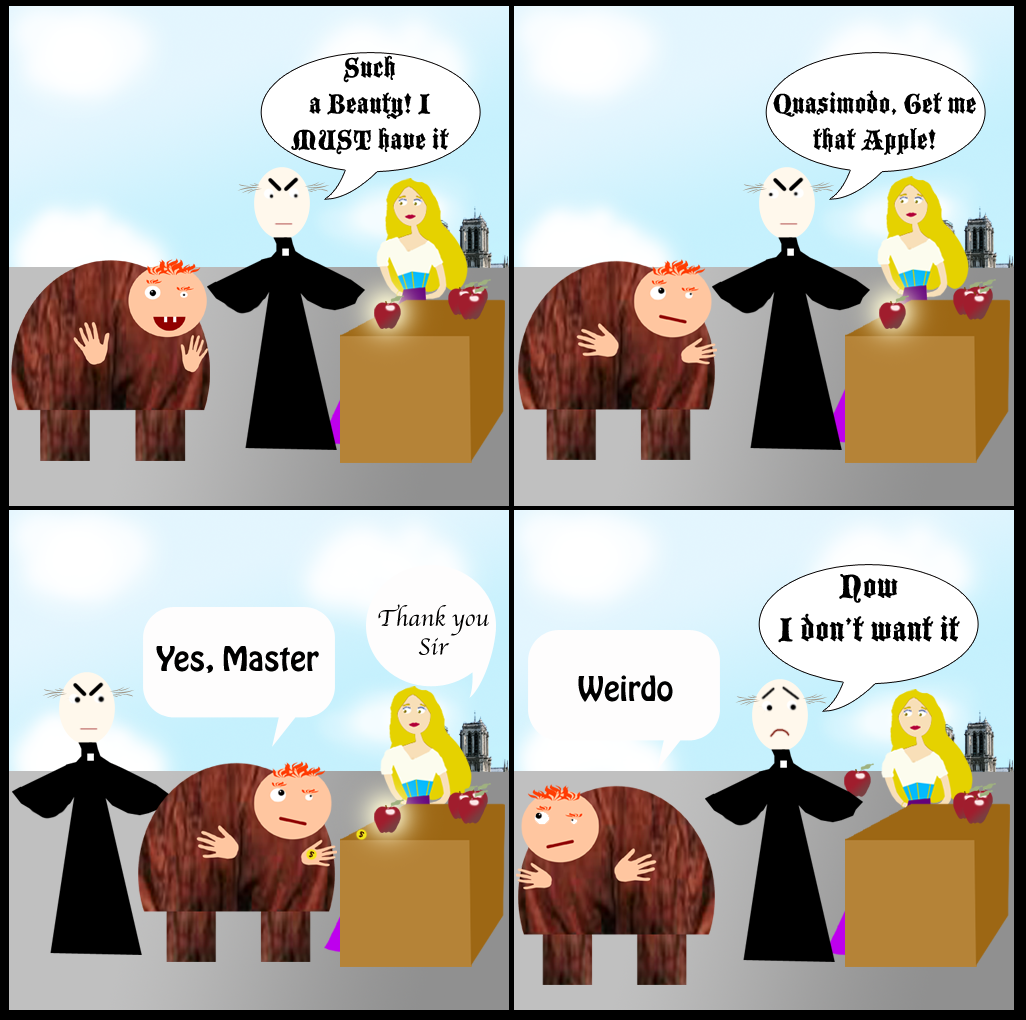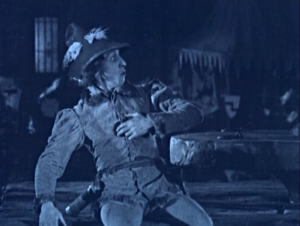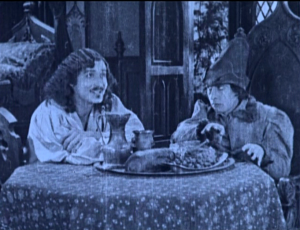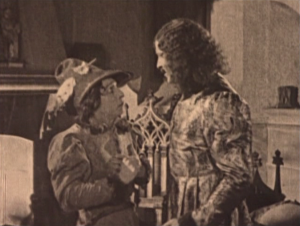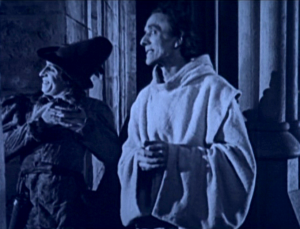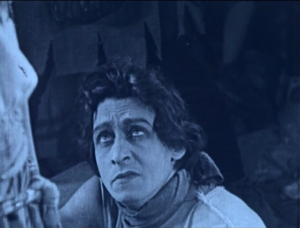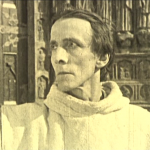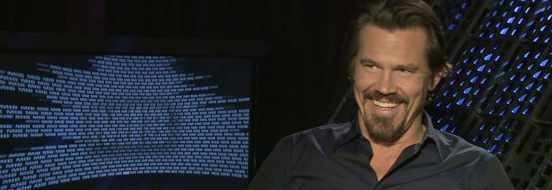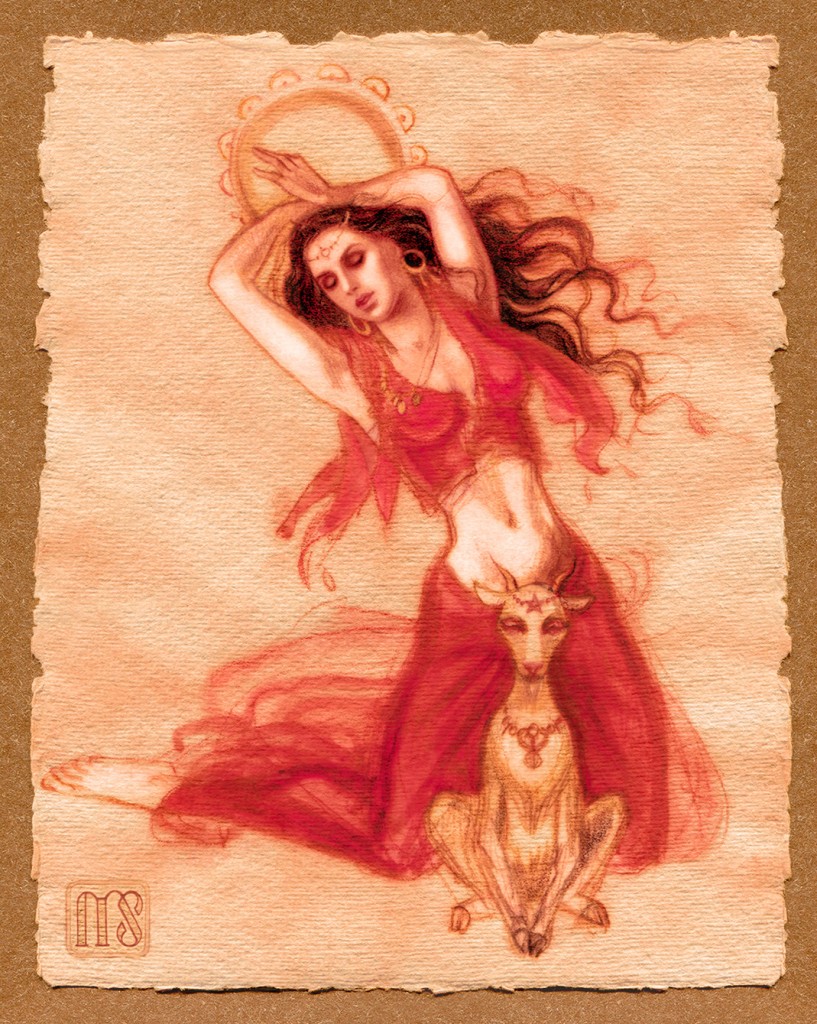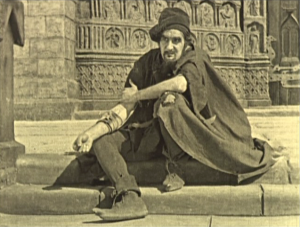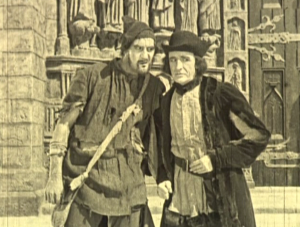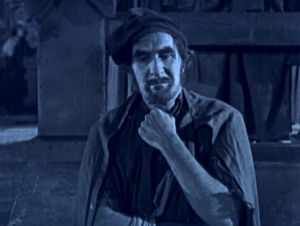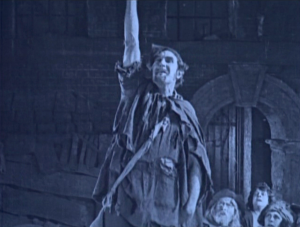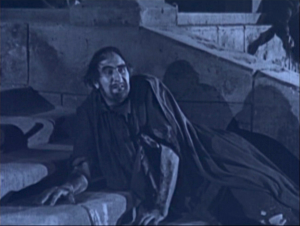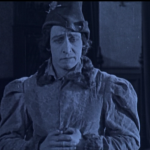Today’s Fan-art is by DaughterGothel. It based on a Esmeralda and Quasimodo’s backstory where Esmeralda is switch for Quasimodo by Gyspies. I have a soft for artwork based off the book. The drawing is beautifully done and I love the sepia tones. Also
I designed two new Hunchback Products on Zazzle a Mug and a t-shirt
Enjoy ^^….?
Don’t let the title fool you, Princess Tutu is great show even if you’re not a fan of anime. It uses a lot of elements and story imaginary from famous ballets and classical music. There are two slight references to Hunchback well one motif and one to Hugo.
The first is to Frollo’s imagery of the fly and the spider both caught in the web (though it;s a butterfly here). While I don’t believe this imaginary to be native to Hugo but he made it well known. Though to be fair this reference comes a promo trailer for Princess Tutu which you can watch here. But moreover Princess Tutu also deals with the characters fighting cruel fates and although this contrasts with Hunchback where the characters give in to fate I thought it was worth a mention.
The second reference is to the Ballet Giselle. Like I said Princess Tutu uses ballets for the basis of episode’s story lines and the show does this really well. Episode 4 uses the Giselle as story reference. The story of Giselle uses Hugo’s poem Fantômes as one of its’ inspiration for the. The ghostly dancer or Willis are from Fantômes. In Fantômes a girl dances to death but if you read the poem which was published before Hunchback you would see a proto Esmeralda. For instance in the poem there is a young Spanish girl who is 15 years old and enjoys dancing. Hugo likens her to a bumblebee and she too wear s blue with spangles.
You can read Fantômes in french here (I used Google Translate)
I realize these references are a bit of stretch so thank you for indulging me.
Gringoire wears many hats in the realm of Hunchback adaptations. Sometimes he the hero, sometimes the narrator, sometimes he is the comic relief and sometimes he is not even there. In the 1923 version in addition to being comic relief, Gringoire is Phoebus’s side kick. That’s right in order to justify Gringoire being in the movie they made him more or less Phoebus’ sidekick. As Gringoire spends more screen time with Phoebus and doesn’t even speak to Esmeralda.
Gringoire’s only function in the movie is acting as a liaison between Phoebus and Esmeralda. Gringoire’s introduction is thrown in during the feast of Fools and all he really does is make does reaction shots to Quasimodo. The next time we see him is when he gets in trouble with the Court of Miracles. In this version no marriage takes place instead Esmeralda orders the Court to let him go. After that Gringoire starts acting as the middle man for Esmeralda and Phoebus. In one scene he delivers a message to Phoebus from Esmeralda. Phoebus then awards him with food but Phoebus’ constant joy keeps preventing Gringoire from eating. The scene is enjoyable and funny and it is unfortunately Grigoire most memorable scene. After that he tells Phoebus Esmeralda is in Notre Dame and didn’t hang and we see him at the end where is happy that everything worked out for the lovers.
Beyond his comic/sidekick role, Gringoire doesn’t have much of personality. He is a poet, he likes food and hates to die. So I guess in this capacity he like the book version. Unfortunately I think this role could have been easy removed from the movie. If there is no marriage their is little point to the Court of Miracle scene. That scene and Gringoire were only in the movie because they tried very hard to maintain the book and even when the movie went in a different direction they still tried and still and more less failed.
If Gringoire wasn’t Phoebus‘ sidekick there would be nothing for him to do and the movie tries to keep almost detrimentally close to the book. The film good have eliminated him and it really wouldn’t have made much of a difference.
Next Time – Dom Claude
While promoting Men in Black III, Josh Brolin gave a short interview for Collider.com. The last question was about the upcoming Hunchback movie. He seems very excited about the project and thinks that filming will take place in either France or England. While I’m all about filming on location, Hunchback films are better when filmed on a set. Sets enable the production to create a more accurate Notre Dame as it looked in the 15th century. Both the 1923 and the 1939 were films on sets and they had amazing set design. Also regardless of enthusiasm, I don’t see Brolin as Quasimodo. He just seems wrong in type. While I want to say I’ll hold off judgement till I at least see a trailer, I probably won’t. I will say this though, if Megan Fox comes anywhere near this project I will boycott it.
What do you think; Josh Brolin as Quasimodo, Yay or Nay?
Notre Dame de Paris original Alumni Julie Zenatti and Daniel Lavoie (Fleur de Lys and Frollo) performed together in Kiev on June 1 2012.
Lavoie and Zenatti singing Ils s’aiment
I love this song and I love Zenatti’s addition to it, they show record an offical recording of it.
Zenatti singing La monture
Lavoie singing most of Belle Belle
Lavoie singing Tu vas me détruire
Lavoie sings this with an acoustic guitar
Lavoie singing Etre prêtre et aimer une femme
Today Fan-art is by Agriografo. I think this drawing is stunning. I love the pose, grace of her movement of her hair and clothing, and I love the softness of the skirt. It’s just so pretty. I also love images of Esmeralda and Djali.
Clopin is the most complex character in the 1923 version of Hunchback of Notre Dame. He’s conniving yet caring. In this version like in most every other version, Clopin is merged with the Duke of Egypt, one of the leaders of the Court of Miracles, leader of the Esmeralda’s group, and Esmeralda’s protector. In in role as the Duke, Clopin is Esmeralda’s adopted father. She is the only person that can soften his heart.
Clopin in the version also has a partnership with Jehan. The nature of their friendship is never explain. Jehan tries to get Clopin mobilizes the Court of Miracle against the nobles and Jehan try to tempt Clopin with gold of Notre Dame in exchange for Esmeralda. The basis for their interaction could be taken from the La Esmeralda Opera Libretto that Hugo wrote in which Clopin works with Frollo and was the one to hide in the room when Esmeralda and Phoebus has their encounter. It could also be that Jehan does join the Court of Miracles in the book though he never interaction in Clopin. Or it could that it is mention in the book by Gringnoire that the Duke intends to sell Esmeralda to “gentlemen priest.”
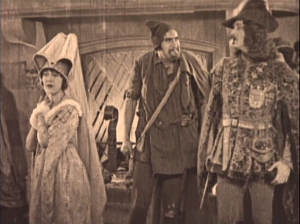
Clopin (Ernest Torrence), Esmeralda (Patsy Ruth Miller) & Phoebus (Norman Kerry) 1923 The Hunchback of Notre Dame
Clopin is also the one driving the social class sub-plot a.k.a the beggars vs the Nobles. It very similar to the 1939 version but in the 1939 version there were stakes, the nobel wanted Esmeralda out of Notre Dame here one noble just wants to marry. So basically it’s Clopin complaining and then getting mad when Esmeralda and Phoebus form a romantic attachment which for him is the ultimate insult.
It’s not wholly the films fault that this sub-plot doesn’t go very far. It’s actually because the copy that survives today is sixteen minutes shorter that the original. Most of these sixteen minutes were comprised of Clopin and one scene with Quasimodo gets clothes for Esmeralda, which is the scene where a prominent picture of Quasimodo was taken, so prominent in fact that it’s on the spine of the DVD. As result of Clopin’s role is much smaller than the film intended. However you can see some pictures and read the script in the Riley’s Book which is published with Pasty Ruth Miller’s Autobiography
, both of which are good reads if you a fan of the 1923 version or Miller’s or of old movies/Hollywood.
Clopin’s character suffers a lot from the cuts made to the film but even with the cuts is he the most complex characters in the film and he at least interesting and memorable.
Next Time – Gringoire

